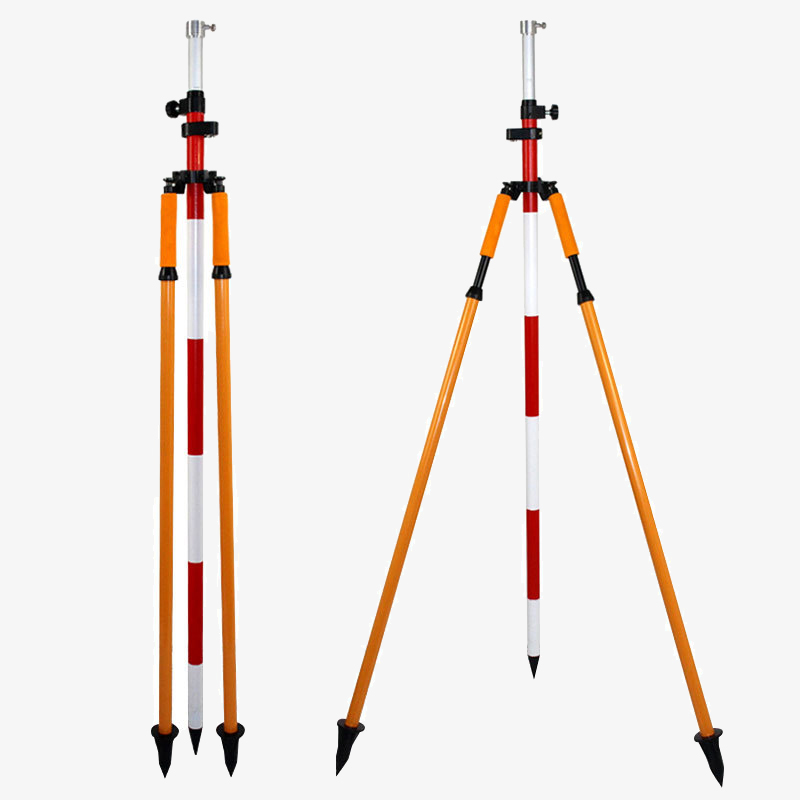A prism pole, also known as range pole, is a measuring tool used in land surveying and construction to determine distances and elevations. It consists of a long, slender pole made of lightweight materials like aluminum or fiberglass, with markings at regular intervals along its length.

Adjustable tension via a set screw in the handle
- Simple and fast setup.
- Powder-coated and silk screened aluminum.
- Red and white.
Application
A prism pole, also known as range pole, is a measuring tool used in land surveying and construction to determine distances and elevations. Centering rod widely used construction, land surveying, laboratory and so on.

- Model: SISCO-PP-2M
- Material: aluminium alloy
- Pole Length: 2.3m
- Bipod Length: 1.1m
- Stretch Length: 2300 mm
- Shrinkage Length: 1280 mm
- Tube Wall Thickness: 1.5 mm
- Bore Diameter: 25 mm
Q1: What is prism pole?
A1: A prism pole is a tool used in surveying and construction to measure distance and elevation. It typically consists of a long, thin pole made of wood or metal, with markings or measurements along its length.
Q2: How does a prism pole work?
A2: The working principle of a prism pole is based on the principle of triangulation. The prism pole consists of a long, slender pole, usually made of aluminum or fiberglass, with a prism at the top. The prism reflects the light from a surveying instrument, such as a total station, back to the instrument.
Q3: What is the function of prism pole?
A3: In surveying, a prism pole or range rod is used for marking the positions of survey stations and sighting these stations as well as the survey points. It can also be used for ranging straight lines.
Tips: How to use prism pole?
To use a prism pole, the surveyor positions the pole at the point to be measured and aims the prism towards the surveying instrument. The instrument sends out a beam of light that hits the prism and is reflected back to the instrument. The surveyor can then read the angle measurement on the instrument and use this information, along with the height of the instrument and any other relevant data, to calculate the distance or height of the object being measured.
Thank you for buying industrial test and measurement equipment on SISCO.com, all products sold by SISCO and the partner cover a 12 months warranty, effective from the date of receiving the products.
What is covered?
SISCO is responsible for providing free spare parts, and free technical support to assist the customer to repair the defective products until the problem is solved.
What is not covered?
- Product purchased from anyone other than a SISCO store or a SISCO authorized reseller.
- Expendable parts.
- Routine cleaning or normal cosmetic and mechanical wear.
- Damage from misuse, abuse or neglect.
- Damage from use of parts other than SISCO approved.
- Damage from use outside the product’s usage or storage parameters.
- Damage from use of parts not sold by SISCO.
- Damage from modification or incorporation into other products.
- Damage from repair or replacement of warranted parts by a service provider other than a SISCO authorized service provider.
- Damage caused by the application environment not meeting the product usage requirements and the failure to perform preventive maintenance.

